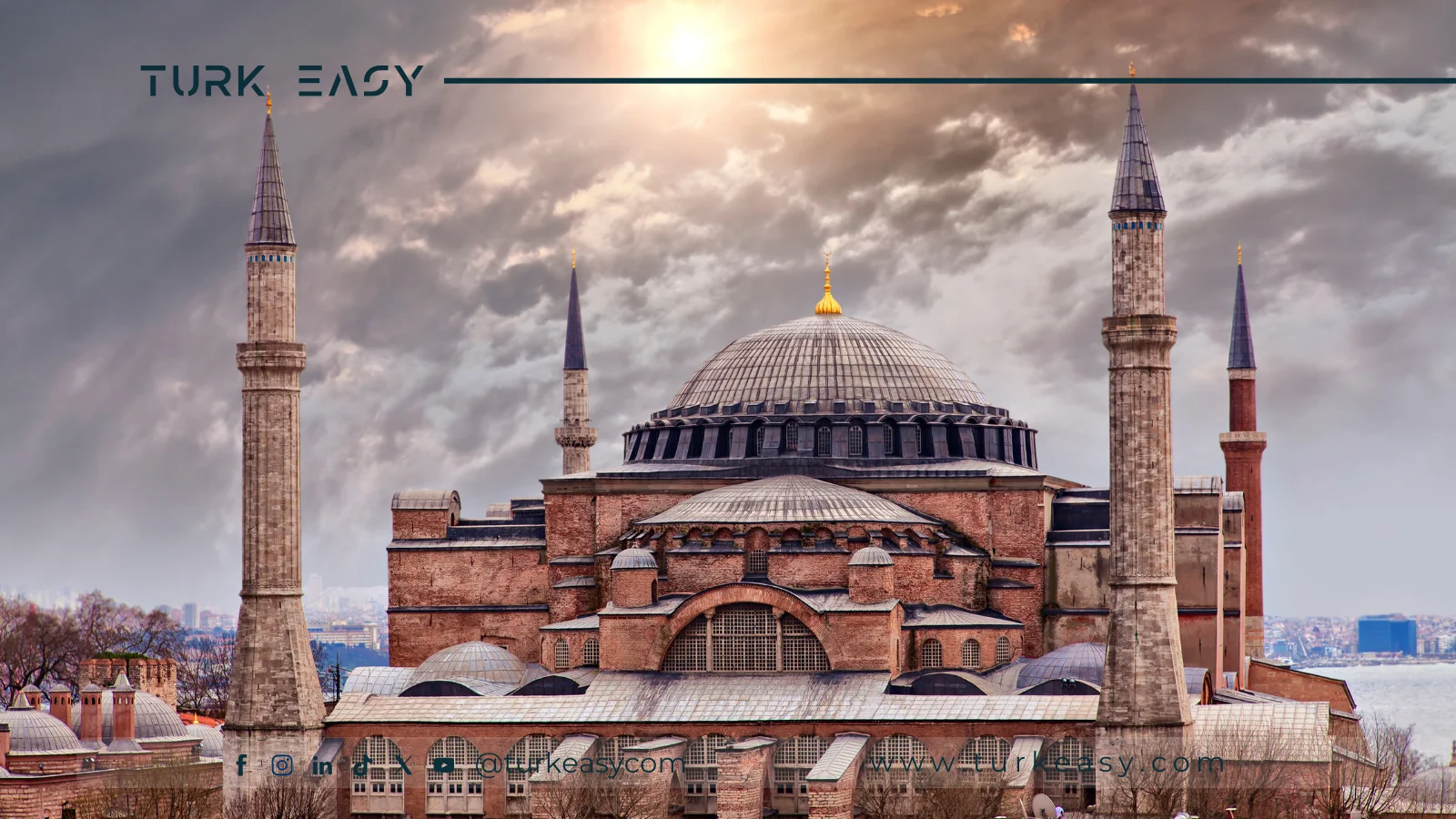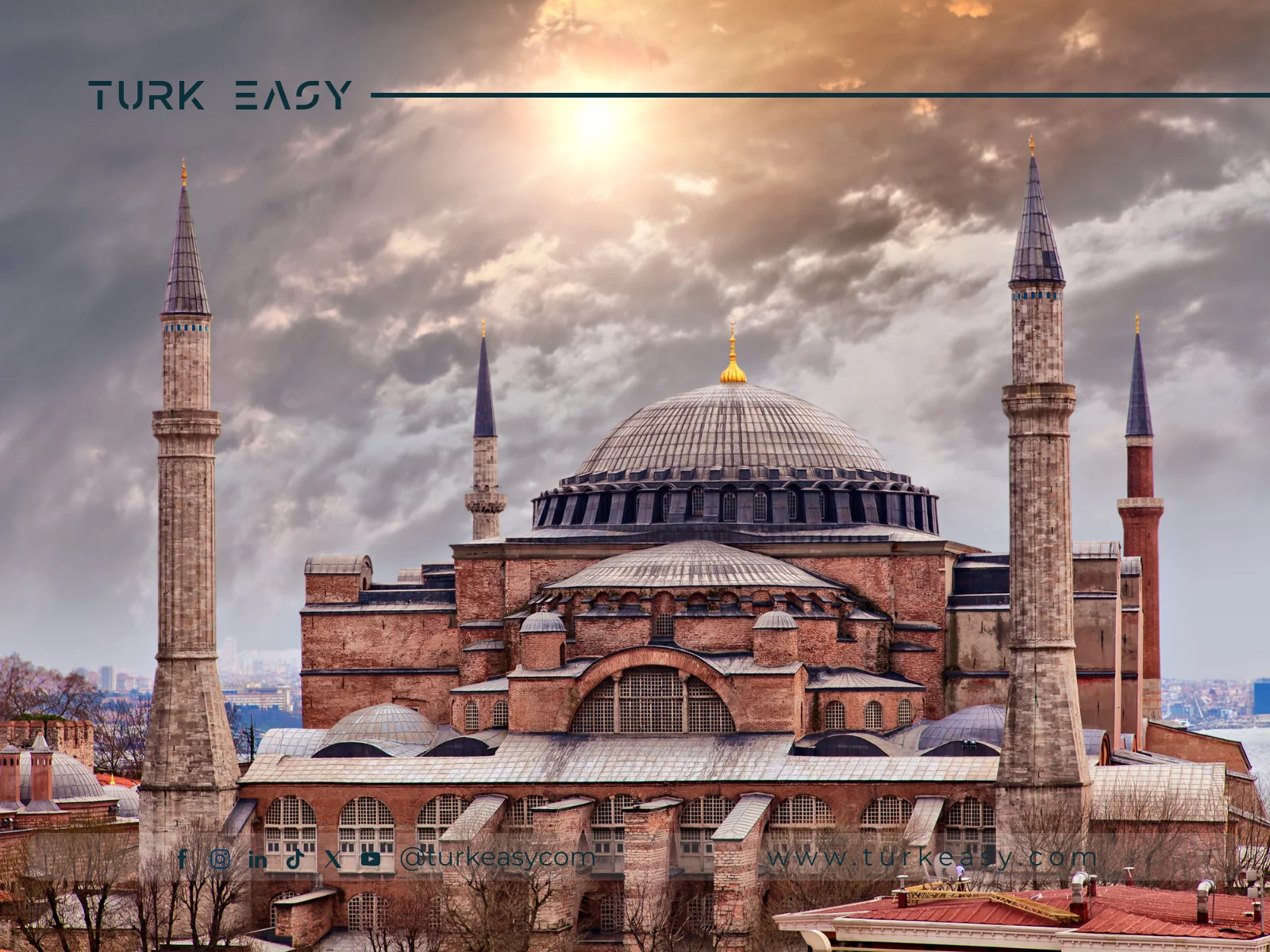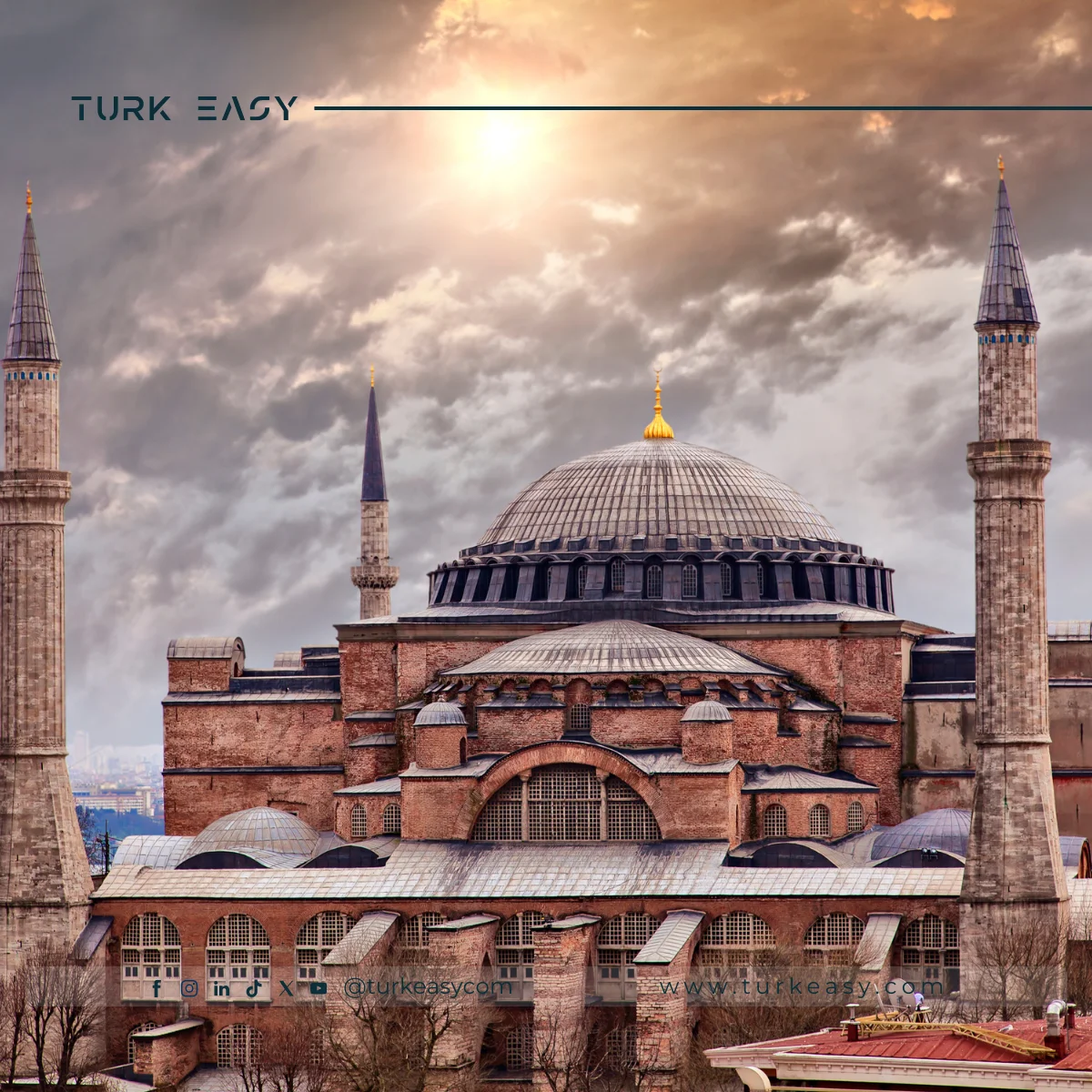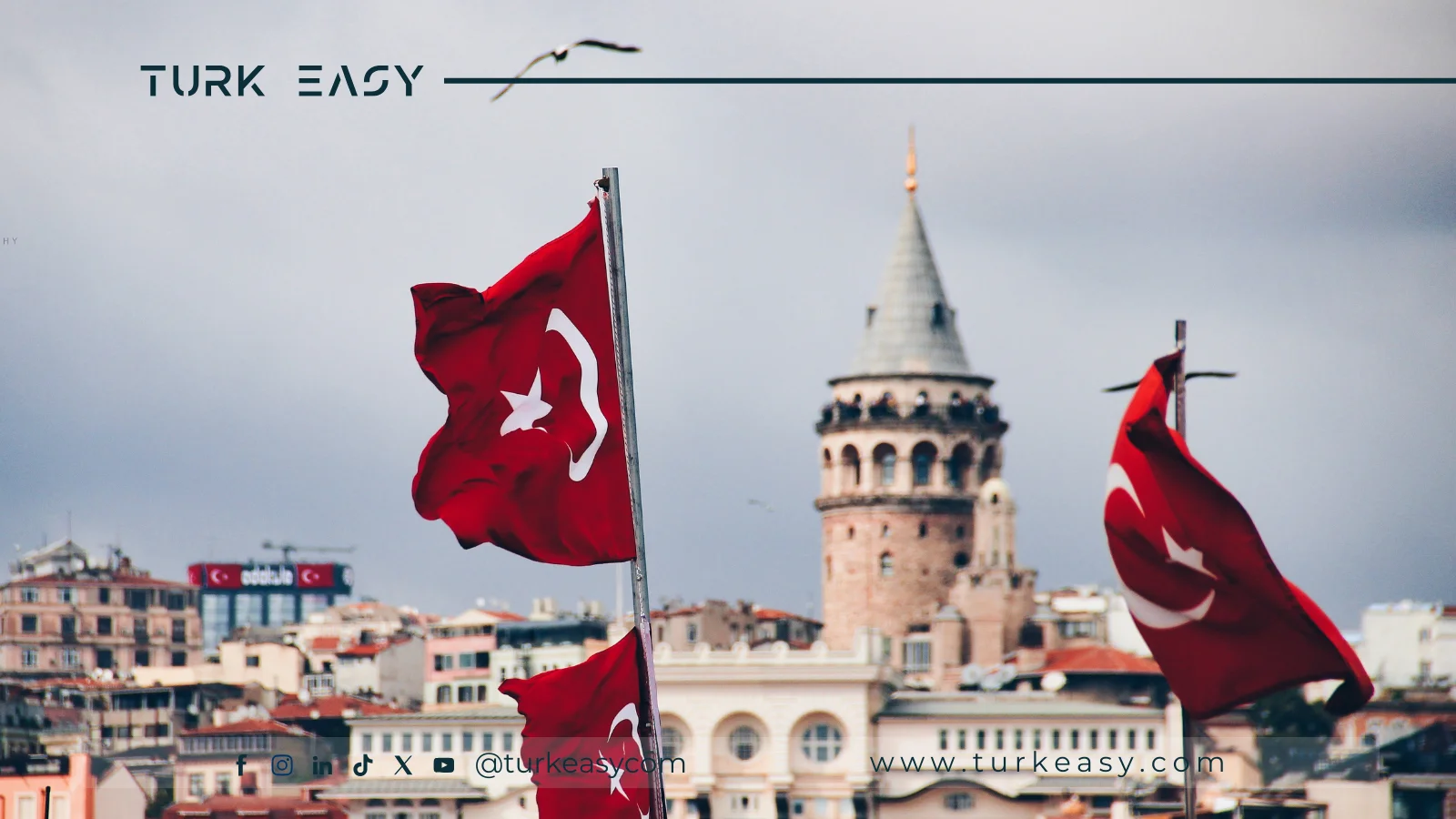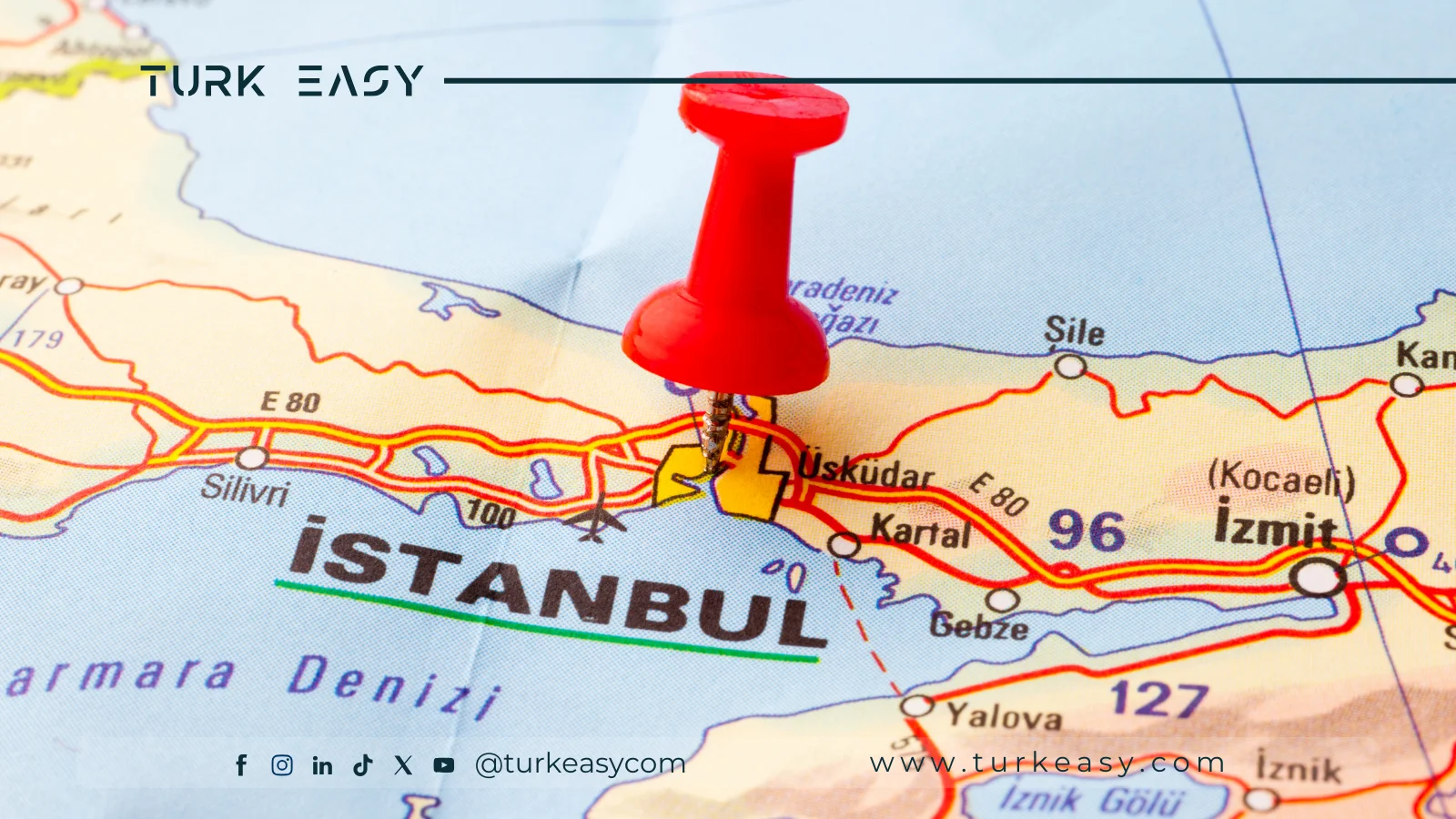The Hagia Sophia Mosque is located in the European part of the Turkish city of Istanbul, and is one of the most prominent symbols of the conquest of Constantinople (Istanbul) by the Ottoman Sultan Mehmet the Conqueror on May 29, 1453, after the city was inaccessible to Islamic conquests for centuries. Hagia Sophia was converted from a church to a mosque after the Ottoman conquest, and is considered one of the most important artistic and architectural monuments in the world. At the beginning of the twentieth century, it was converted into a museum that requires a fee to enter, but it was once again returned to a mosque that is open to visit for free. Built in 537, it is considered by some historians to be the eighth wonder of the world.
Today, the Hagia Sophia Mosque is an artistic and architectural landmark in Istanbul's Sultanahmet district. It was used as a mosque for 481 years, before being turned into a museum in 1934. On July 10, 2020, the Turkish Supreme Administrative Court annulled the 1934 Council of Ministers' decision, and the edifice was reopened for worship and prayer, and its affiliation was transferred from the Ministry of Culture and Tourism to the Presidency of Religious Affairs.
Hagia Sophia Cathedral
The Hagia Sophia Church was built during the Eastern Roman Empire (395-1453) in the capital of Byzantium (Istanbul). The original church was destroyed by the Roman Emperor Septimius Severus and rebuilt under Emperor Constantine II in 360 under the name Hagia Sophia (Holy Wisdom). The church was destroyed again 44 years later during a rebellion in the city over the erection of a silver statue of Avdokia, the wife of the Eastern Roman Emperor Arcadius, in front of it.
Under Emperor Theodosius II, who succeeded Arcadius, Hagia Sophia was rebuilt and officially opened in 415. It continued as the largest church in Byzantium until 532 when it was burned and destroyed during the “Nika Rebellion” under Justinian I. After 39 days of rebellion, Emperor Justinianus (Justinian I) set out to rebuild Hagia Sophia, and construction was completed in 537. About 100 architects participated in this project under the supervision of two chief engineers, with each engineer in charge of 100 workers.
Hagia Sophia Mosque
The conquest of Constantinople (now Istanbul) and the conversion of Hagia Sophia into a mosque is one of the most important events in Turkish Islamic history. After a long siege, Sultan Mehmet the Conqueror entered the city on May 29, 1453, and went straight to Hagia Sophia, where he planted his flag as a symbol of conquest and threw an arrow towards the dome. He then moved to a corner of the temple and prostrated himself and prayed two rak'ahs, converting the place from a church to a mosque. Four Ottoman-style cylindrical minarets were added and the walls were decorated with huge paintings bearing the names of God, the name of the Prophet Muhammad, and the names of the Rashidun caliphs in Arabic letters.
With the conquest of Istanbul, official Turkish references confirm that Mehmet the Conqueror received the title of Roman Emperor and became the owner of real estate registered in the name of the Byzantine family. According to this law, Hagia Sophia was registered in the name of Mehmet the Conqueror and the endowment he founded. During the period of the Republic, an official copy of the title deed, written in the new letters of today's Turkish script, was issued to officially record his legal status.
Hagia Sophia Museum
In 1934, the first president of modern Turkey, Mustafa Kemal Ataturk, converted Hagia Sophia into an art museum. The museum has become a popular tourist destination that attracts millions of visitors every year, where they can see the intertwining of Islamic and Christian motifs that adorn the place. Before that, Hagia Sophia was a highly symbolic Islamic center, associated with the conquest of Constantinople.
Hagia Sophia Cemetery
The Hagia Sophia Cemetery is part of the Hagia Sophia complex and is located near it, separated from it by a garden. The cemetery houses the graves of five Ottoman sultans who ruled the Ottoman Empire in the 16th and 17th centuries, namely: Mehmet III, Selim II, Murad III, Ibrahim I, and Mustafa I. The cemetery also contains the graves of a number of the sons of these sultans. The tomb is characterized by a magnificent Ottoman architectural style and beautiful decorations written in the most beautiful Arabic scripts.
The reason for the Hagia Sophia controversy: Church or mosque?
The Hagia Sophia has been the subject of much debate over whether it is a church or a mosque, with calls from Christians and Muslims to reuse it as a mosque or a church instead of a museum. The Turkish government based its decision to turn Hagia Sophia back into a mosque on Sultan Mehmet the Conqueror's reliance on a fatwa that permits the conversion of a church into a mosque in a country that was conquered by force. Another version is that Sultan Mehmet bought the Hagia Sophia church from the Romans with his own money, converted it into a mosque and endowed it for Muslims. Turkish President Recep Tayyip Erdogan emphasized in a speech on the occasion of Hagia Sophia's return to worship as a mosque that the Turkish government's decision in the 1930s to turn the mosque into a museum “was not only a betrayal of history, but also a violation of the law,” explaining that Hagia Sophia belongs to the endowment of Sultan Mehmet the Conqueror and not to any government entity. He emphasized that Turkey has the right to convert Hagia Sophia into a mosque in accordance with the endowment deed.
Hagia Sophia's location and design
The Hagia Sophia Mosque is located in the Sultanahmet district, which is easily accessible by tram line (train), where visitors can get off at the “Sultanahmet” station and walk for five minutes through a wide park to reach the mosque. The site can also be reached by public taxi.
Hagia Sophia's architectural design
The main building of Hagia Sophia is 82 meters long, the dome is 55.6 meters high, while its diameter is about 31.7 meters, and it contains 40 windows. The entire building rests on four massive columns, each 24.3 meters high and made of green marble. At the end of the 20th century, four hidden diagonal trusses supporting the upper dome were discovered, making them the oldest known trusses in the history of architecture.
The building has nine doors and is designed in the style of the ancient Roman basilica, an architectural style made famous by the Greeks in the construction of their religious edifices, similar examples of which can be seen in Rome and the Vatican City dome. The building has a rectangular shape inside and out, and is fronted by a huge atrium (heavenly space) surrounded by a long portico that leads to side halls, and from there visitors enter the main hall topped by a large dome.
Tourist Activities in Hagia Sophia
The Hagia Sophia area offers a variety of interesting tourist activities, including:
- Pray in the Hagia Sophia Mosque**: Enjoy the beauty of the decorations, the grandeur of the building and the splendor of the architectural details.
- Taking pictures**: Visitors can take great photos from inside and outside the mosque to document their visit.
- Sitting in the opposite garden**: Relax in the spacious garden opposite the mosque and enjoy the peaceful atmosphere.
- Visit Hagia Sophia Cemetery**: Explore the Hagia Sophia Cemetery, which houses the graves of five Ottoman sultans.
- Enjoy restaurants and cafes**: Experience a range of restaurants and cafes surrounding the area, which provide visitors with an atmosphere of calm and tranquility.

